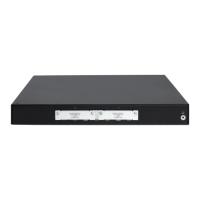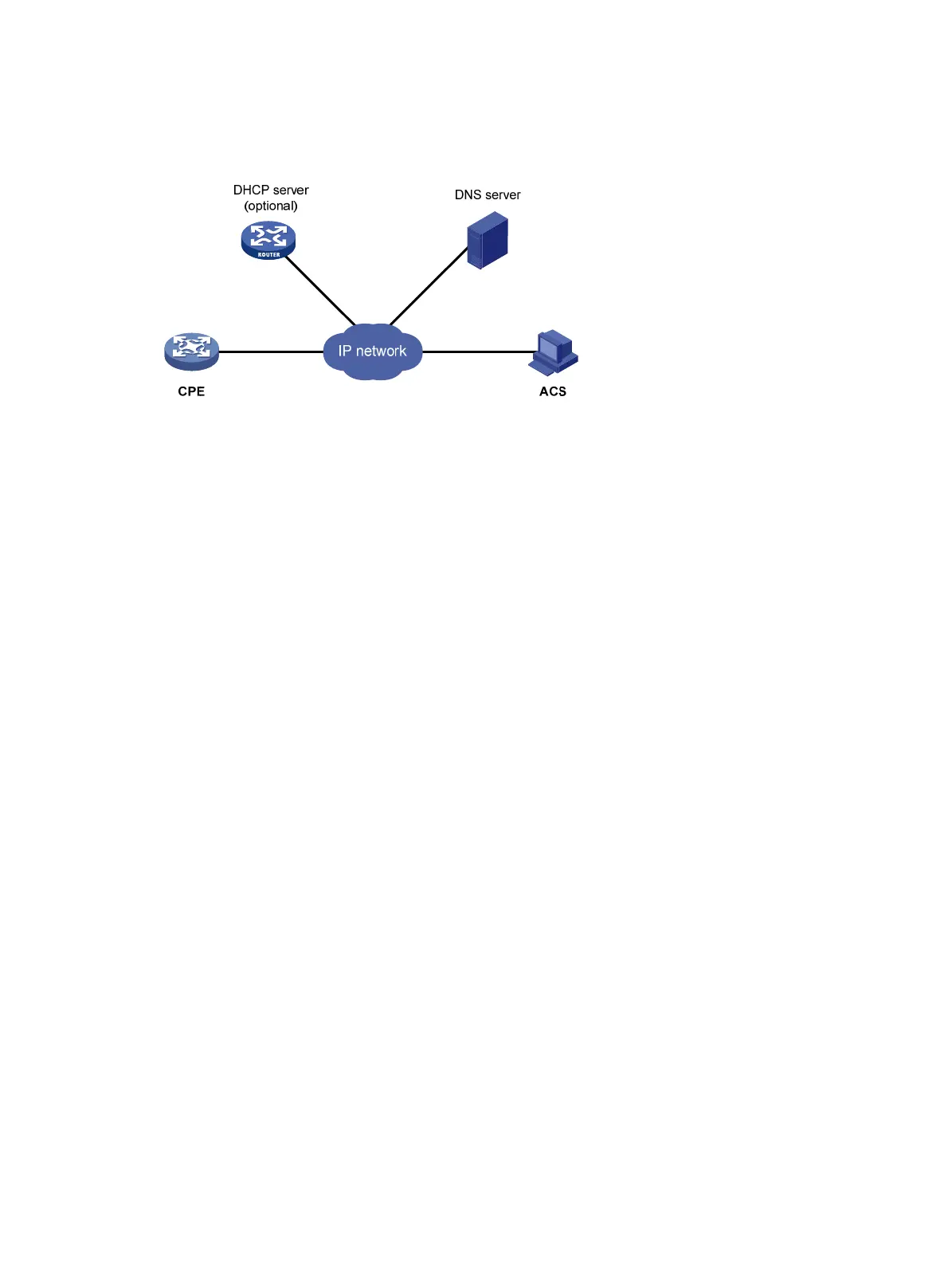132
TR-069 network framework
Figure 520 Network diagram
The basic network elements of TR-069 are:
• ACS—Auto-Configuration Server, which is the management device in the network.
• CPE—Customer Premise Equipment, which is the managed device in the network.
• DNS server—Domain Name System server. TR-069 defines that an ACS and a CPE use URLs
to identify and access each other. DNS is used to resolve the URLs.
• DHCP server—Dynamic Host Configuration Protocol server, which assigns an IP address to an
ACS and a CPE, and uses the options filed in the DHCP packet to provide configuration
parameters to the CPE.
The MSR router is a CPE and uses TR-069 to communicate with an ACS.
TR-069 basic functions
Auto connection between ACS and CPE
A CPE can connect to an ACS automatically by sending an Inform message. The following
conditions might trigger an auto connection:
• CPE startup. A CPE can find the corresponding ACS according to the acquired URL, and
initiates a connection to the ACS.
• A CPE is configured to send Inform messages periodically. The CPE automatically sends an
Inform message at the configured interval (1 hour for example) to establish connections.
• A CPE is configured to send Inform messages at a specific time. The CPE automatically sends
an Inform message at the configured time to establish a connection.
• The current session is not finished but interrupted abnormally. In this case, if the number of CPE
auto-connection retries does not reach the limit, the CPE automatically establishes a
connection.
An ACS can initiate a Connect Request to a CPE at any time, and can establish a connection with
the CPE after passing the CPE authentication.
Auto-configuration
When a CPE logs in to an ACS, the ACS can automatically apply some configurations to the CPE to
perform auto configuration of the CPE. Auto-configurable parameters supported by the device
include, but are not limited to the following:
• Configuration file (ConfigFile)
• ACS address (URL)
• ACS username (Username)

